Introduction
The Tamron 70-300mm F4.5-6.3 Di III RXD is the most compact and lightest 70-300mm zoom lens currently available for Sony’s range of full-frame mirrorless cameras.
The new Tamron 70-300mm telephoto zoom features an RXD stepping focus motor for quiet and fast AF operation and a moisture-sealed construction.
The optical formula is comprised of 15 elements in 10 groups, including one low dispersion front element, and it has an iris diaphragm with seven rounded aperture blades.
The Tamron 70-300mm F4.5-6.3 Di III RXD lens is priced at £649.99 / $549.99 in the UK and USA respectively. Note that this lens is not compatible with teleconverters.
Ease of Use
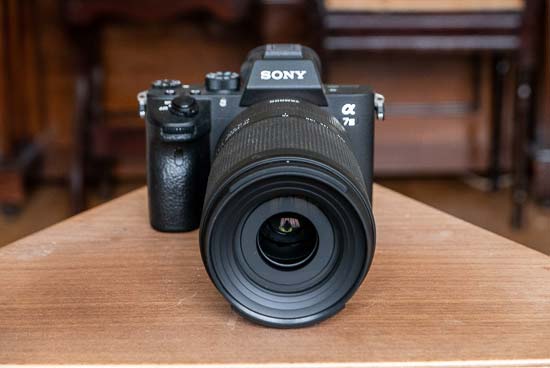
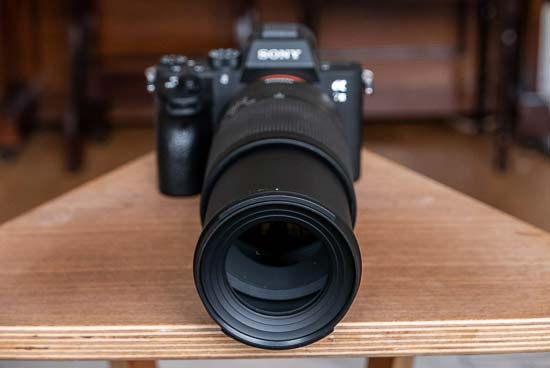
Given the 300mm maximum reach, the Tamron 70-300mm F4.5-6.3 Di III RXD is a surprisingly lightweight and compact lens.
It measures almost 15cms in length and weighs in at only 545g.
The lens extends by about an extra 6cm when fully zoomed out to 300mm.
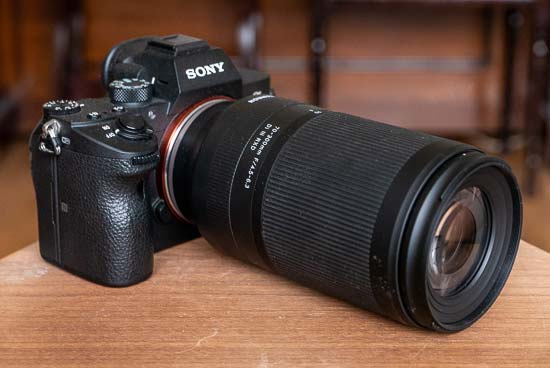
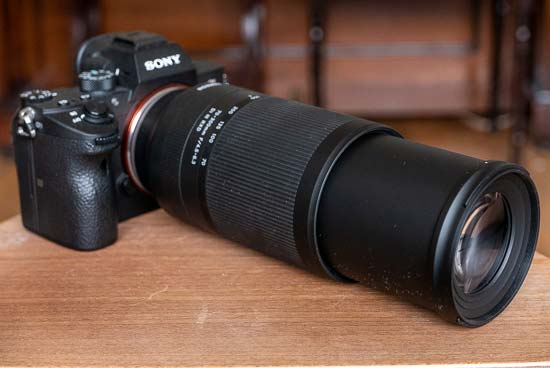
You can also use it quite effectively on a smaller APS-C body like the Sony A6000 series of cameras, where the equivalent focal length will change to 105-450mm.
Compared to its closest rival, the Sony FE 70-300mm F4.5-5.6 G OSS, the Tamron 70-300mm F4.5-6.3 Di III RXD is 4.5mm longer but a whopping 309g lighter and uses a smaller, more economical 67mm filter size.
Build quality is fine, but not quite as good as past Tamron “SP” branded lenses that we’ve reviewed. The Tamron 70-300mm F4.5-6.3 Di III RXD feels solid enough in your hand, despite its aluminum-magnesium alloy construction.
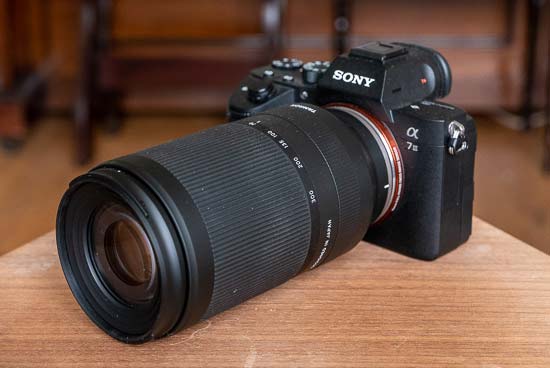
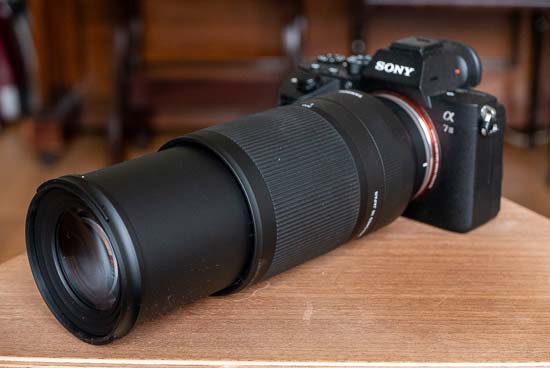
The zoom ring is very wide and has a ridged, rubberised grip band. There is no useful focus lock switch as found on many other Tamron zooms.
Note that the zoom ring is rather unusually in front of the focus ring, which initially proved to be somewhat counter-intuitive.
The focusing ring is much narrower than the zoom ring, making it more difficult to locate in a rush.


The Tamron 70-300mm F4.5-6.3 Di III RXD features a high-speed RXD (Rapid eXtra-silent stepping Drive) motor unit that allows virtually silent auto-focusing, making it well-suited to video use.
Importantly, full-time manual focus override is also possible and the lens is also fully compatible with the “Direct Manual Focus (DMF)” system feature of Sony cameras that enables the user to instantly switch between autofocus and manual focus.
Focusing is fully internal but zooming is not, with the length of the lens changing as you zoom from 70 to 300mm.
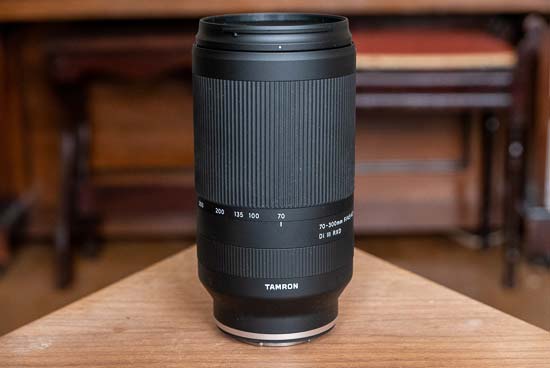
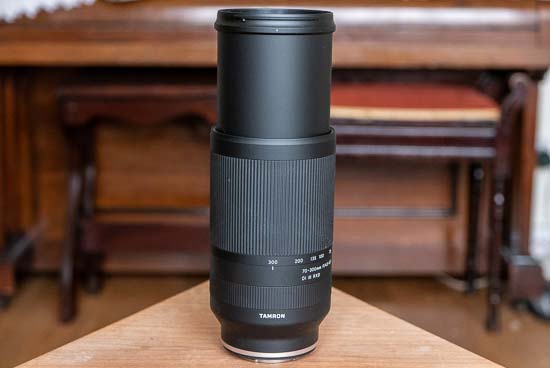
In use, we found the auto focusing system to be very quiet and satisfyingly fast with the lens mounted on a Sony A7 III camera, although not quite as snappy as the Sony FE 70-300mm F4.5-5.6 G OSS lens.
The Tamron 70-300mm F4.5-6.3 Di III RXD isn’t fully weather-proof but it does benefit from a moisture-resistant construction which helps to prevent moisture from penetrating the lens, although we’d hesitate to use it in the rain for a prolonged period.
The lens is supplied with plastic lens caps and a plastic circular lens hood that clicks into place – there’s no lens bag included. The filter size is 67mm.
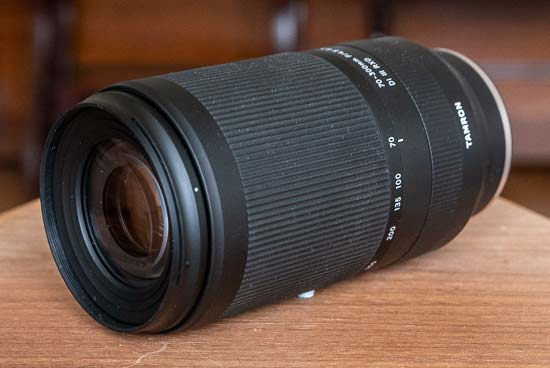
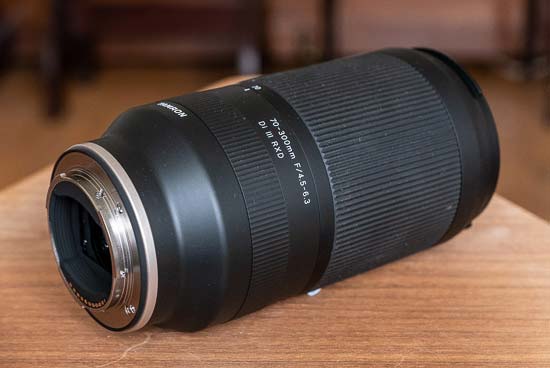

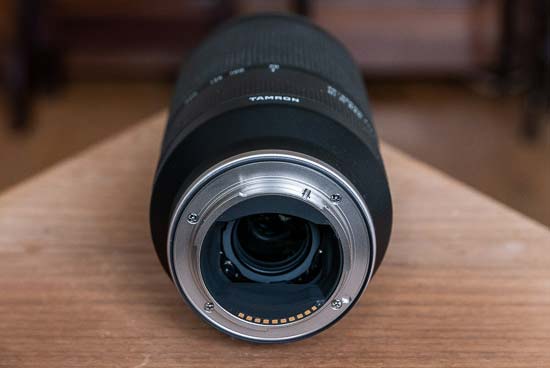
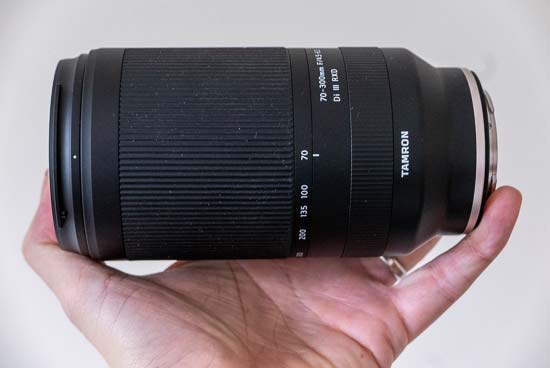

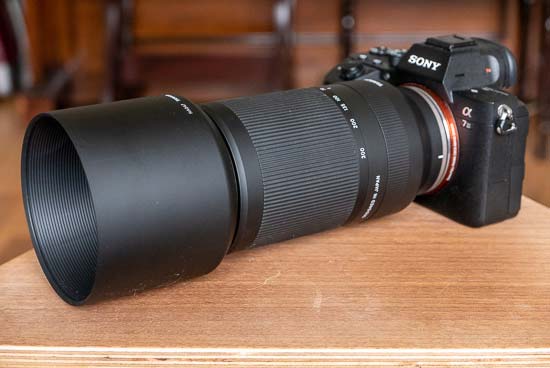
Focal Range
At the 70mm focal length the angle of view is 34°21′.
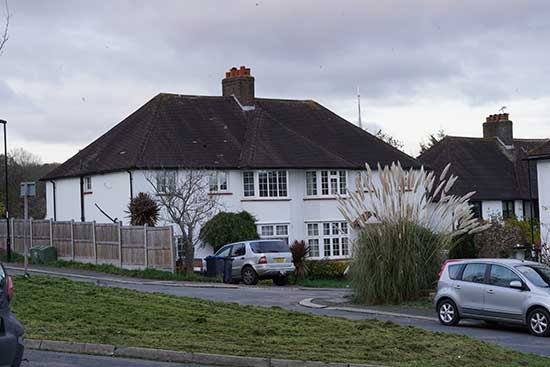
70mm
At the 300mm focal length the angle of view is 8°15′.

300mm
Chromatic Aberrations
Chromatic aberrations, typically seen as purple or blue fringes along contrasty edges, are fairly well controlled with this lens – the example below shows the worst-case scenario.

Light Fall-off and Distortion
With the Tamron 70-300mm F4.5-6.3 Di III RXD lens wide open at f/4.5 or f/6.3, you can see some obvious light fall-off in the corners at both ends of the zoom range. Stopping down helps, although to completely get rid of this phenomenon, you will need to use an f-stop of f/11 or smaller.

70mm

300mm
On the whole, distortion is very-well controlled at both ends of the focal range.

70mm

300mm
Macro
The Tamron 70-300mm F4.5-6.3 Di III RXD is not really a macro lens.
The close-focus point is 0.8m / 31.5inch from the film/sensor plane at 70mm and 1.5m / 59.1inch at 300mm, with a maximum reproduction ratio of 1:9.4 at 70mm and 1:5.1 at 300mm.




Bokeh
Bokeh is a word used for the out-of-focus areas of a photograph, and is usually described in qualitative terms, such as smooth / creamy / harsh etc.
Tamron have employed an iris diaphragm with seven rounded blades for a fairly pleasing rendering of the out-of-focus highlights.
Based on what we have seen, we can say that they have largely succeeded. Below you’ll find some examples, but you are also encouraged to check out our Sample Images.







Sharpness
In order to show you how sharp the Tamron 70-300mm F4.5-6.3 Di III RXD lens is, we are providing 100% crops on the following pages.








